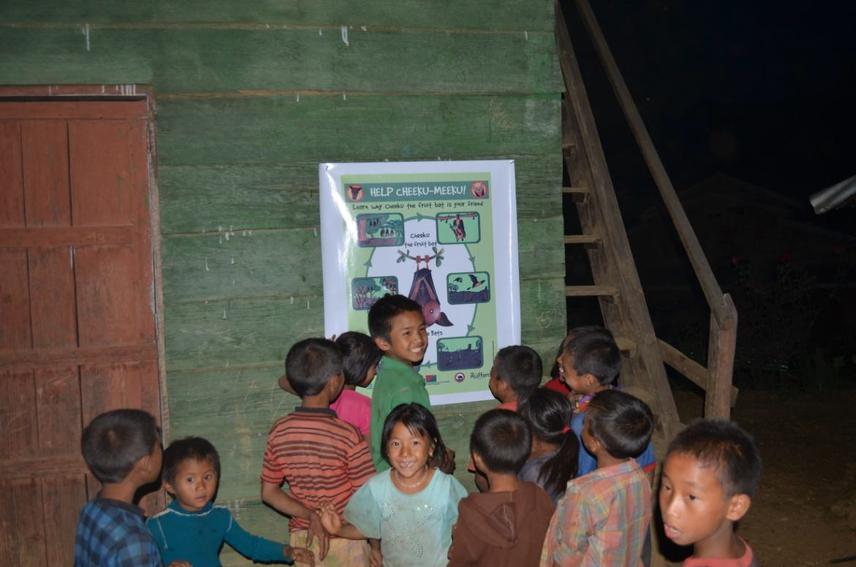Dailu Pilot Dovih
Our study aims at knowing the species composition in this area, which will give us insight to take up better conservation management plans required to ensure long term conservation. Our study also aims at understanding disease transmission from bats to humans through this bats harvest.

Children trying to understand the Poster depicting the role of bats in ecosystem.
The areas surrounding Mt. Saramati (Nagaland) are rich in biodiversity. However, the region faces tremendous hunting pressure and habitat degradation and loss. Bats, like any other animal, face the same threat due to traditional hunting resulting in the extermination of thousands of bats in the yearly bats harvests. There are no reliable surveys of bats and no documentation of the extent of biodiversity loss through this organised harvest.
Similarly, little is known about possible disease transmission through bats in this region. Evaluating the bats species and their population status is crucial for conservation plans. Understanding the geographical distribution of infectious diseases in bats/ wildlife is important for preventing disease outbreak. Northeast India could provide important clues to understanding biogeography and ecology of emerging infectious disease as there are lots of species affinities with that of Southeast Asian countries.
Hunting also increases the risk of disease transmission. One- third of the human emerging infectious diseases are from animals. Increasing human- bats interactions have also led to the emergence of human infections such as Rabies, Ebola, Nipah, Marburg virus, SARS-CoV, and Hendra viruses (Marburg virus, Hendra virus are just viruses, not infections) . The absence of such reports from bats in India probably reflects a lack of surveillance and coordinated study.
Our study aims in knowing species composition in this area which will give us insight to take up better conservation management plans required to ensure long term conservation in the region. This study also focuses on active community participation and capacity building which is very crucial in this region as the land is owned by the community. Awareness campaigns and an intensive training programme in basic wildlife survey and monitoring techniques for the youth and student will prove a vital tool for conservation.